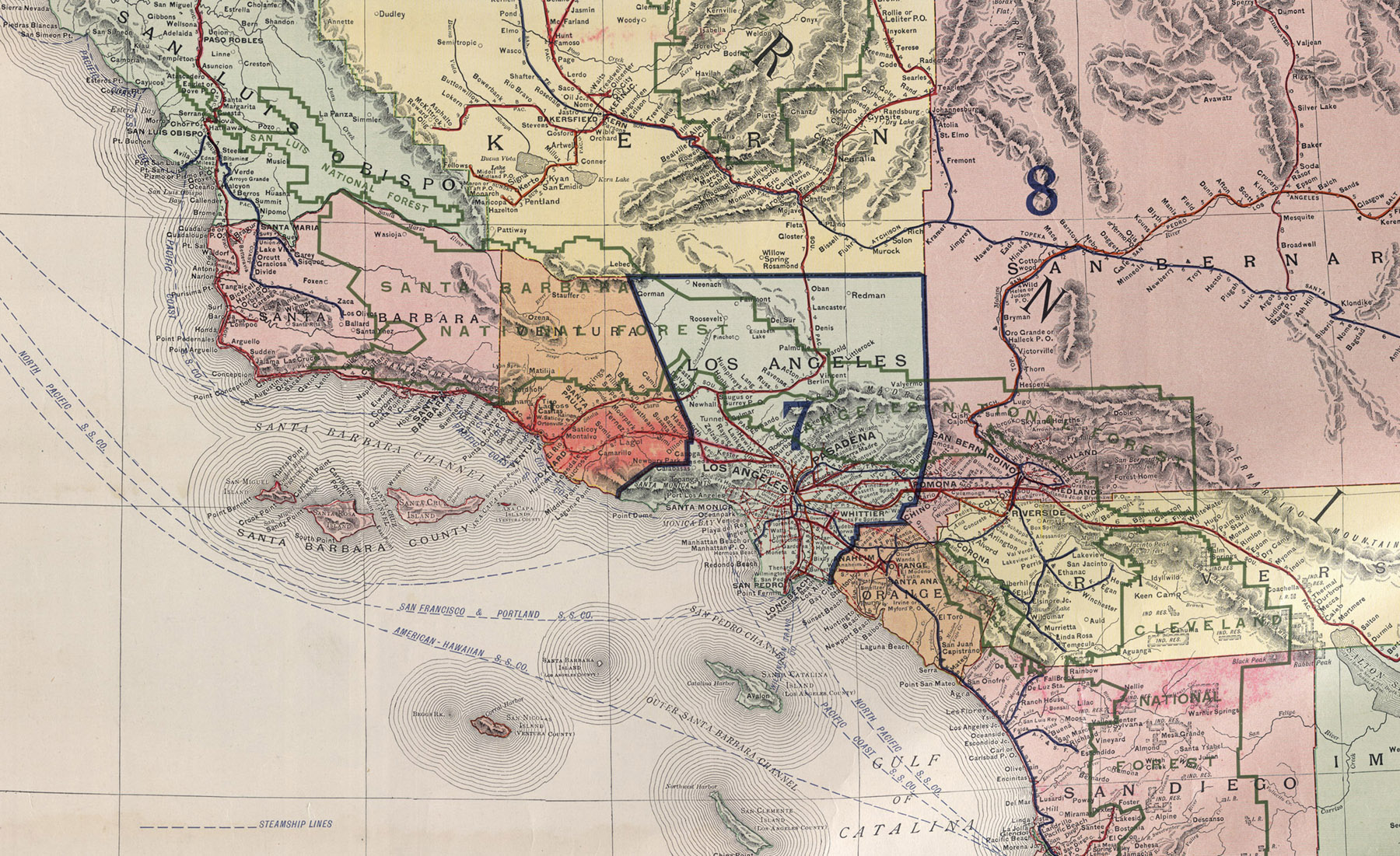
#365 Hotel Del Coronado
The Hotel Del Coronado has been the place to be and be seen since opening in 1888. It was the first beach resort on the west coast and was the largest hotel in the world at the time. This National Register of Historic Places property preserves stunning Victorian & Queen Anne architecture and is the second largest wooden structure in the United States.
Hollywood royalty have used this as their playground since the 1920's including Charlie Chaplin, Lucille Ball, Desi Arnaz and Rudolph Valentino. The Del became even more famous from the 1959 film 'Some Like It Hot' starring Marilyn Monroe, Tony Curtis and Jack Lemmon. Enjoy exploring this stunning landmark with some of the finest sand on Earth.
#364 Alabama Hills
The Alabama Hills Recreation Area is a stunning mirage of rocks and hills in the Eastern Sierra Nevada. Metamorphosed volcanic rock up to 300 million years old as well as biotite monzogranite up to 85 million years old create the wondrous assortment of shapes and arches. Hiking, photography and stargazing are some of the best ways to enjoy the land. Many films were shot here since the 1920's including 'How the West Was Won' and 'The Lone Ranger'. A scenic drive along Movie Flat Road will take you to exact locations for famous film scenes.
#363 Point Lobos State Natural Reserve
Point Lobos State Natural Reserve, the 'Crown Jewel of the California State Park System', preserves a stunning rocky coastline with hidden coves, pocket beaches and the Monterey Cypress, one of only two places naturally grown. The adjacent Point Lobos State Marine Reserve protects the waters which include vast kelp forests. Spend the day hiking, snorkeling and swimming among this gorgeous coast.
#362 Tioga Road
Tioga Road is a scenic drive through Yosemite's High Country which offers several vista points, waterfalls, lakes, hiking opportunities as well as the unforgettable Tuolumne Meadows. It is a great escape from the crowds of the valley and is usually open from June through September. The drive also takes you to some of the last great undeveloped land of the west.
#361 Los Angeles Central Library
The Los Angeles Central Library was built in 1926 in the Art Deco architectural style with Mediterranean Revival and Egyptian influences. The crown jewel is the rotunda with its 4 massive murals, each 40 feet wide, created by artist Dean Cornwell. Each one depicts an important piece of California history: the Era of Discovery, the Building of the Missions, Founding of the Pueblo of Los Angeles and the Americanization of California.
#360 Borrego Palm Canyon
Borrego Palm Canyon is a stunning 3 mile hike in Anza-Borrego Desert State Park. Gorgeous rocky waterfalls surround this lush Palm Oasis, the largest in the park while more than 80 migratory birds use it as a watering hole alongside Desert Bighorn Sheep. Visit after a rain for gushing falls and cooler weather.
#359 Mount Rubidoux
Located on the edge of the city, Mount Rubidoux (1,331 feet) is one of Riverside's iconic landmarks. The oldest outdoor non-denominational Easter Sunrise service in the United States started here in 1909 and would draw 30,000 people at its peak in the 20's. The mountain features a famous cross dedicated to Mission founder Father Junípero Serra as well as a World Peace Bridge. It is now a city park with more than 3 miles of hiking trails providing stunning views of Riverside and the Inland Empire.
#358 Big Sur
Highway 1 through Big Sur is known as the 'Most Beautiful Drive in the World'. This 90 mile stretch from San Simeon to Carmel is 'The Greatest Meeting of Land and Sea' on Earth. The Santa Lucia Mountains drop majestically to the ocean creating a dramatic rocky coast. Vista points at each bend provide stunning overlooks to get out and enjoy the view. Drive slow and spend the day admiring one of California's great wild places.
#357 Museum of Man
The San Diego Museum of Man is Balboa Park's premier anthropological museum. Housed in the historic California Building, the museum originated from the 1915 Panama-California Exposition when Dr. Edgar Lee Hewett of the School of American Archaeology created the exhibits with his travels from the American Southwest to Guatemala.
After the Fair, a group of residents helped create a permanent museum to house the collections. Famous exhibits include Mayan History with original casts from Quiriguá, Footsteps Through Time which includes 65 million years of human evolution with more than 100 touchable replicas, Kumeyaay Native American history and the Ancient Egyptian Collection, one of only a few in the world.





























